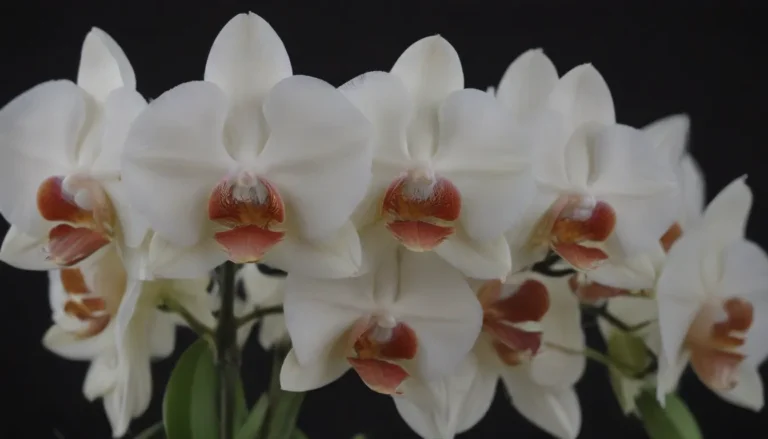Ultimate Guide to Growing and Caring for Rugosa Roses

Rugosa roses are a gardener’s delight, known for their hardy nature and stunning blooms. If you’re looking to add these beautiful shrubs to your garden, this comprehensive guide will provide you with all the information you need to grow and care for rugosa roses successfully.
What are Rugosa Roses?
The rugosa rose shrub (Rosa rugosa) is a robust plant with fragrant flowers that typically have five petals. They come in various bloom varieties, including semi-double and double blooms, adding to their charm. These shrubs have a rounded form with dark green foliage on thorny canes, and they tend to spread via suckers, creating a dense thicket. However, their ability to spread quickly makes them invasive in some areas, so always check local regulations before planting rugosa roses.
Rugosa Rose Care Tips
Rugosa roses are known for being low-maintenance and can thrive in less-than-ideal growing conditions. Here are some essential care tips to help your rugosas flourish:
- Light: Plant rugosa roses in full sun to ensure they receive at least six hours of direct sunlight each day. Insufficient sunlight can result in fewer blooms.
- Soil: Rugosas prefer rich, loamy soil with good drainage and a slightly acidic pH. While they can tolerate various soil types, including gravelly, sandy, and clay soils, they thrive in nutrient-rich soil.
- Water: Keep the soil moist but not waterlogged for young plants, while established shrubs can withstand some drought. Avoid overhead watering to prevent fungal growth on the leaves.
- Temperature and Humidity: Rugosa roses are hardy plants that can survive extreme temperatures, including freezing conditions. They also tolerate high humidity as long as there is adequate air circulation.
- Fertilizer: Unless the soil is incredibly poor, rugosas usually don’t require much additional feeding. A slow-release flowering shrub fertilizer applied in the spring should be sufficient.
Types of Rugosa Roses
There are several cultivars of rugosa roses that vary in appearance, each with its unique characteristics. Some popular cultivars include:
- **’F.J. Grootendorst’
- **’Hansa’
- **’Henry Hudson’
- **’Sandy’
- **’Albiglora’
- **’Atropurpurea’
Pruning Rugosa Roses
Pruning is essential to maintain the shape and health of rugosa roses. The best time to prune is in late winter to early spring. Promptly remove any damaged or diseased stems as they appear, and adjust the amount of pruning based on the desired size of your shrub. Pruning encourages new growth and keeps the plant full and healthy.
Propagating and Growing Rugosa Roses
Propagating rugosa roses can be done by allowing the suckers to grow or by moving them to a different location. Late spring is the ideal time to propagate rugosa roses. Additionally, while rugosa roses are typically grown from nursery plants, you can also grow them from seeds, but be aware that seeds from cultivars may not produce true-to-type plants.
Common Pests and Diseases
Although rugosa roses are generally resistant to pests and diseases, they can still be affected by common issues such as aphids, scale, black spot, and powdery mildew. Regularly inspect your plants for any signs of infestation and treat them promptly with suitable remedies to prevent further damage.
Tips for Blooming Rugosa Roses
Rugosa roses bloom in late spring to early summer, with some varieties offering a second bloom later in the season. To encourage reblooming, deadhead the spent flowers. The rose hips that appear after flowering add visual interest to the plant during fall and winter.
Troubleshooting Common Problems
While rugosa roses are generally trouble-free, certain issues such as yellowing leaves or drooping foliage can indicate stress or improper care. Ensure your plants receive adequate moisture, proper drainage, and appropriate sunlight to prevent these problems from occurring.
Additional Considerations
- Potting and Repotting: Rugosa roses have a vigorous growth habit, making them unsuitable for container growing. Opt for miniature, patio, or polyantha roses for container gardening.
- Overwintering: Mulch around the base of your shrub helps insulate the roots during winter. Rugosa roses have excellent cold tolerance and require minimal overwintering maintenance.
- Similar Species: If you enjoy rugosa roses, you may also like the Carolina rose or seaside rose, which offer similar low-maintenance qualities.
In conclusion, rugosa roses are versatile and resilient plants that can thrive in various growing conditions. By following these care tips and guidelines, you can enjoy an abundance of beautiful blooms and lush foliage from your rugosa rose shrubs. Happy gardening!





